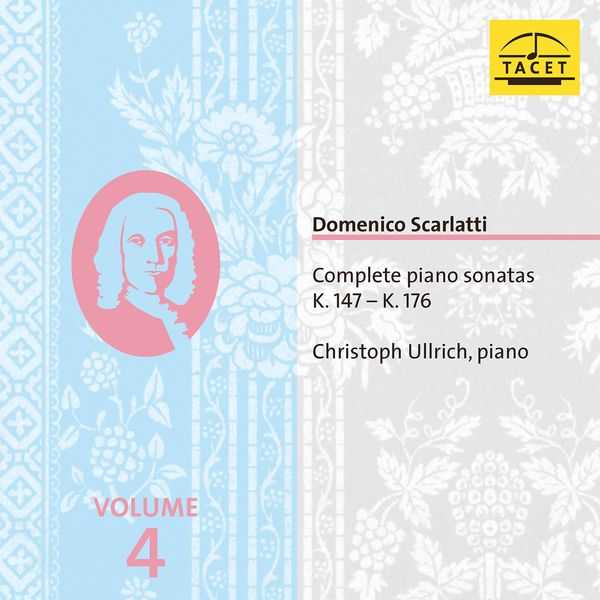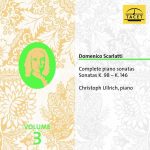

Composer: Domenico Scarlatti
Performer: Christoph Ullrich
Number of Discs: 2
Format: FLAC (tracks)
Label: Tacet
Catalogue: TACET263DIG
Release: 2020
Size: 2.14 GB
Recovery: +3%
Scan: yes
CD 01
01. Keyboard Sonata in E Minor, K. 147
02. Keyboard Sonata in A Minor, K. 148
03. Keyboard Sonata in A Minor, K. 149
04. Keyboard Sonata in F Major, K. 150
05. Keyboard Sonata in F Major, K. 151
06. Keyboard Sonata in G Major, K. 152
07. Keyboard Sonata in G Major, K. 153
08. Keyboard Sonata in B-Flat Major, K. 154
09. Keyboard Sonata in B-Flat Major, K. 155
10. Keyboard Sonata in C Major, K. 156
11. Keyboard Sonata in C Major, K. 157
12. Keyboard Sonata in C Minor, K. 158
13. Keyboard Sonata in C Major, K. 159
14. Keyboard Sonata in D Major, K. 160
15. Keyboard Sonata in D Major, K. 161
16. Keyboard Sonata in E Major, K. 162
17. Keyboard Sonata in E Major, K. 163
18. Keyboard Sonata in D Major, K. 164
19. Keyboard Sonata in C Major, K. 165
CD 02
01. Keyboard Sonata in C Major, K. 166
02. Keyboard Sonata in F Major, K. 167
03. Keyboard Sonata in F Major, K. 168
04. Keyboard Sonata in G Major, K. 169
05. Keyboard Sonata in C Major, K. 170
06. Keyboard Sonata in G Major, K. 171
07. Keyboard Sonata in B-Flat Major, K. 172
08. Keyboard Sonata in B Minor, K. 173
09. Keyboard Sonata in C Minor, K. 174
10. Keyboard Sonata in A Minor, K. 175
11. Keyboard Sonata in D Minor, K. 176
Christoph Ullrich loves passing music on to the next generation. He founded the “Taschen-Oper-Companie” (pocket opera) company, which combines concerts for primary school pupils with prior preparation. He also enjoys challenges such as the complete recording of Mozart and Schubert’s piano works, and the recording of Scarlatti’s 555 Sonatas, the fourth volume of which is presented here.
Recorded in the order of the catalogue established by Ralph Kirkpatrick, this new delivery comprises thirty sonatas, K. 147 to 176, played on a large concert Steinway. Christoph Ullrich makes no attempt to “replicate” the harpsichord, but instead performs these miniatures with generally measured tempos and phrasing that does not neglect either singing or legato.
Its design is entirely guided by the “commedia dell’arte” which mesmerised Goethe during a trip to Italy in 1786. Christophe Ullrich likes to recall the Neapolitan’s lively, funny playing that Scarlatti had seen in his youth and with which all his music seems to be imbued: this incredible variety of mood changes guided the German pianist’s particularly lively performance, often with a touching naivety.



